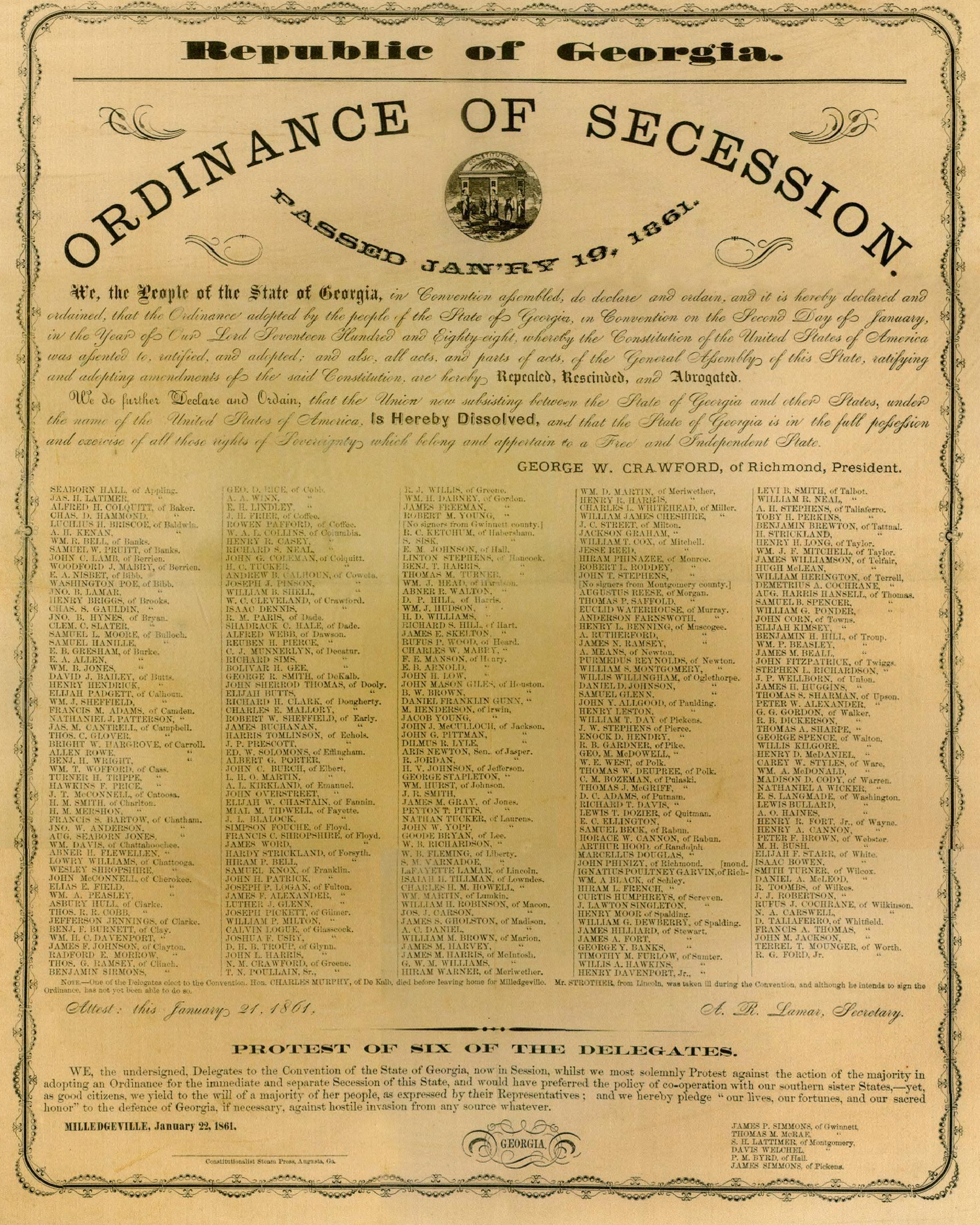The communication innovations of the American Whigs that were central to gathering power and forging a new union of independent states could also be used to dissolve that union. There is nothing in the practice of the committee, the declaration, or the distribuged network of committees and conventions to determine the cause they could be fashioned to serve. In the 18th century they helped make possible the French and Haitian Revolutions and in the 19th century they were used by the movements toward abolition and women's sufferage. However, they were also used by southerners who challenged the idea that the US federal union was immuned from secession. As early as 1830, leaders like John Calhoun of South Carolina proposed the doctrine of "nullification": that states that had freely enterred into a political union were also free to quit it. That argument was developed to oppose particularly offensive federal laws. But its most comprehensive application came at the end of 1860 and the beginning of 1861 when seven slave holding states declared their seccession from the federal Union. Notice that the "Ordinance of Succession" observes many of the traits of the revolutionary declarations of the previous century. . |
![Union Dissolved! [Image from Charleston Mercury]](Images/William_Warner/Protocols_of_Liberty_Illustrations/Conclusion/Fort-Sumter-South-Carolina-secession-paper-Union Desolved.jpg) |
 |

![Protocols of Liberty: Communication, Innovation, and teh American Revolution [Book Banner from Title Page Image]](Images/William_Warner/Protocols_of_Liberty_Illustrations/Protocols of Liberty - Title Banner.png)


![Protocols of Liberty: Communication, Innovation, and teh American Revolution [Book Banner from Title Page Image]](Images/William_Warner/Protocols_of_Liberty_Illustrations/Protocols of Liberty - Title Banner.png)
